Key features
Enermax has recently introduced the new Liqmaxflo cooler model series. These coolers feature a hefty radiator, a fan above the pump to cool the area around the CPU socket, and their loop can even be refilled with liquid. Today’s review will focus on the 360mm variant, the middle of the range (240mm and 420mm variants are also available). I have pretty high expectations for this cooler, so hopefully it will be able to live up to them.
Key features of the cooler
Enermax has taken a similar path with Liqmaxpro coolers as the German company Arctic Cooling has tried before. This means a combination of a thicker radiator and fans that are optimized for higher static pressure. The Liqmaxflo 360 variant is (as the name probably makes quite clear) equipped with a trio of 120mm fans from the Silent Flow series.
However, the design of the Liqmaxflo 360 doesn’t hide any big surprises. It is still based on the tried and tested combination of a cooling block with an integrated pump and a radiator that serves as a heat exchanger for the entire loop. These two basic elements of the cooler are connected by 400 mm long rubber tubing, which is fitted with nylon braiding for increased durability and a more attractive appearance. The tubes are connected to the cooling block using swivel fittings, allowing for easier installation and routing whn building.
An interesting element is the 60mm fan with ARGB LED on the top of the cooling block, which takes care of cooling the surroundings of the CPU socket. This detail is sometimes underestimated, leading to unnecessarily high temperatures in the CPU power delivery, that is unless your build has well-tuned airflow. The cover of this fan is magnetically attached to the block and can be rotated in 90° increments so that the manufacturer’s logo is always horizontal. A small but useful detail.
The copper coldplate is factory coated with a thin layer of thermal paste, which makes installation faster and easier. While the coldplate is large enough for mainstream processors, it is not large enough for AMD Threadrippers. This also explains why this cooler does not support the TR4/sTRX4 socket. However, considering the overall representation of these processors in mainstream builds, it’s a complete marginality. If you do happen to be one of the users of these processors, however, you will unfortunately have to look elsewhere.
The supplied fans are equipped with an atypical connector that unifies the routing of PWM and RGB signals and also allows the fans to be connected in series, which greatly simplifies cable management. In the cooler’s accessories you will find an adapter for connecting the fans and the motherboard. The radiator used also features an interesting element. At the end of the radiator we find a screw, under which is hidden a service inlet for refilling the liquid, if the amount of liquid in the loop drops over time to an extent that would threaten to reduce the efficiency of the radiator or threaten noisy operation of the pump due to air bubbles in the loop. In practice, it is never possible to prevent the liquid from gradually evaporating from the loop, which after a certain period of time leads to a reduction in the efficiency of the cooler and, in an extreme case, to damage to the pump due to air bubbles in the loop. This is because the pump uses a ceramic bearing which requires the presence of liquid to lubricate it and excessive wear occurs during so-called “dry running”.
The accessories of the Enermax Liqmaxflo cooler are exceptionally generous. Of course, you will find all the necessary components for installing the cooler on the processor, and of course there are 5mm and 30mm screws for mounting the radiator in a case, or for mounting fans on the radiator. There is also a small tube of extra thermal paste. A nice bonus is three plastic clips for tidier tube routing and also a compact ARGB controller if you’re missing the 5V ARGB header on your board. And also present is the aforementioned cable adapter to connect the proprietary fan connector to the motherboard headers. I myself was very surprised and pleased by the presence of a plastic bottle with an applicator that contains 100 ml of replacement cooling liquid, as well as an adapter for the 24-pin ATX power cable so that you can get the cooler pump running while refilling the liquid without having to boot up the entire computer. This is where we practically reach the line between an all-in-one cooler and a custom-built loop.
Installation of the cooler is pretty straightforward and simple and you shouldn’t run into any problems. Everything is detailed in the supplied user manual. As usual, when installing the cooler you use the native motherboard backplate for AMD processors and for Intel processors you use the supplied backplate with adjustable screw spacing depending on the socket – LGA 1700 has a slightly wider hole spacing (78 × 78 mm) in the motherboard compared to LGA 1200/115x (75 × 75 mm).
Cooler and fan parameters
If we disregard the thickness of the radiator, which is 38 millimeters, then Liqmaxflo 360 has pretty much standard parameters compared to other coolers in the same class. If your case has room for a total cooler thickness of at least 65 mm (radiator + fans), you shouldn’t run into compatibility issues. The CPU block with the pump is also quite compact, so there shouldn’t be any problems even with motherboards with oversized VRM heatsinks around the CPU socket.
| Cooler | Enermax Liqmaxflo 360 | DeepCool LT720 | MSI MEG Coreliquid S360 | |
| Supported sockets | Intel 115x, 1200, 1700, 20xx; AMD AM4, AM5 | Intel 115x, 1200, 1700, 20xx; AMD AM4, AM5, sTR4/sTRX4 | Intel 115x, 1200, 1700, 20xx; AMD AM4, AM5, TR4/sTRX4 | |
| Radiator dimensions (H × W × T) | 400 × 120 × 38 mm | 402 × 120 × 27 mm | 394 × 120 × 27 mm | |
| Block dimensions (H × W × T) | 70 × 70 × 69 mm | 94 × 80 × 68 mm | 84 × 95 × 95 mm | |
| Hose length | 400 mm | 410 mm | 380 mm | |
| Pump speed | 3000 rpm | 3100 rpm | 2800 rpm | |
| Radiator material | aluminium | |||
| Max RAM height | no restrictions | |||
| Warranty | TBD | 3 years | ||
| Approx. retail price | € 130 | € 135 | € 250 |
Enermax uses Silent Flow fans for the Liqmaxflo cooler, which are optimized for higher pressure, which is more than reasonable considering the radiator used. Their speed range is set to a reasonable ratio between noise, airflow and static pressure.
| Fan | Enermax Silent Flow 12P | DeepCool FK120 PWM | MSI MEG Silent Gale P12 | |
| Bearing | FDB | HDB | ||
| Max. speed | 1800 rpm | 2250 rpm | 2000 rpm | |
| Max static pressure | 2.40 mm H2O | 3.27 mm H2O | 2.21 mm H2O | |
| Max. airflow | 98.6 m3/h | 145.9 m3/h | 95.5 m3/h |
- Contents
- Key features
- Measurement methodology
- Results – 36 dBA
- Results – 39 dBA
- Results – 42 dBA
- Results – 45; 48 and 51 dBA
- Results – maximum speed
- Spectral analysis of noise
- Conclusion and evaluation






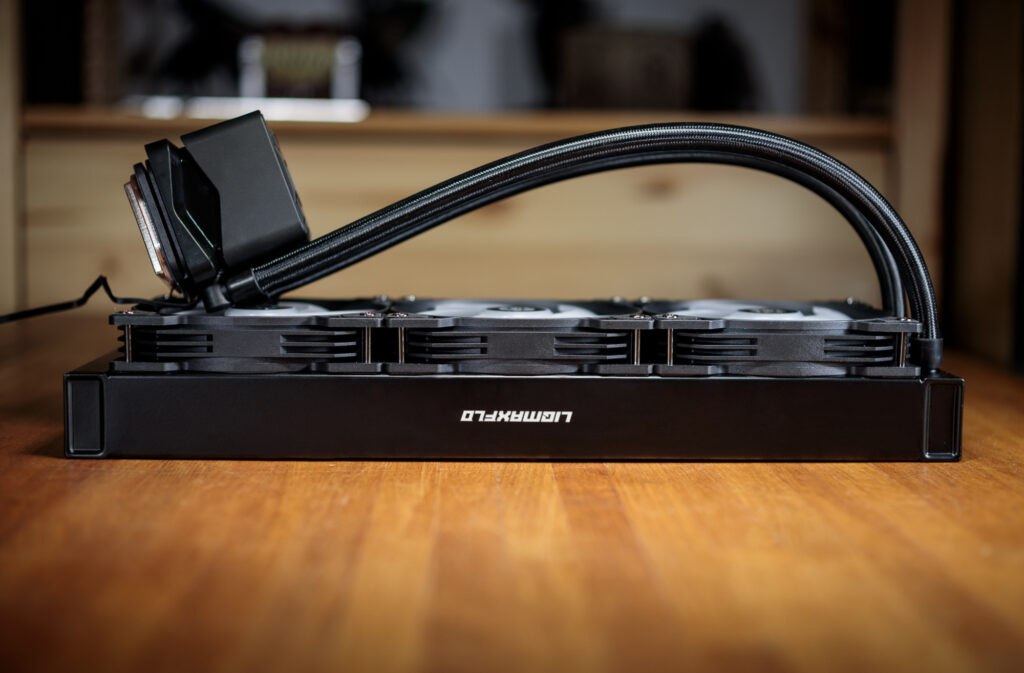

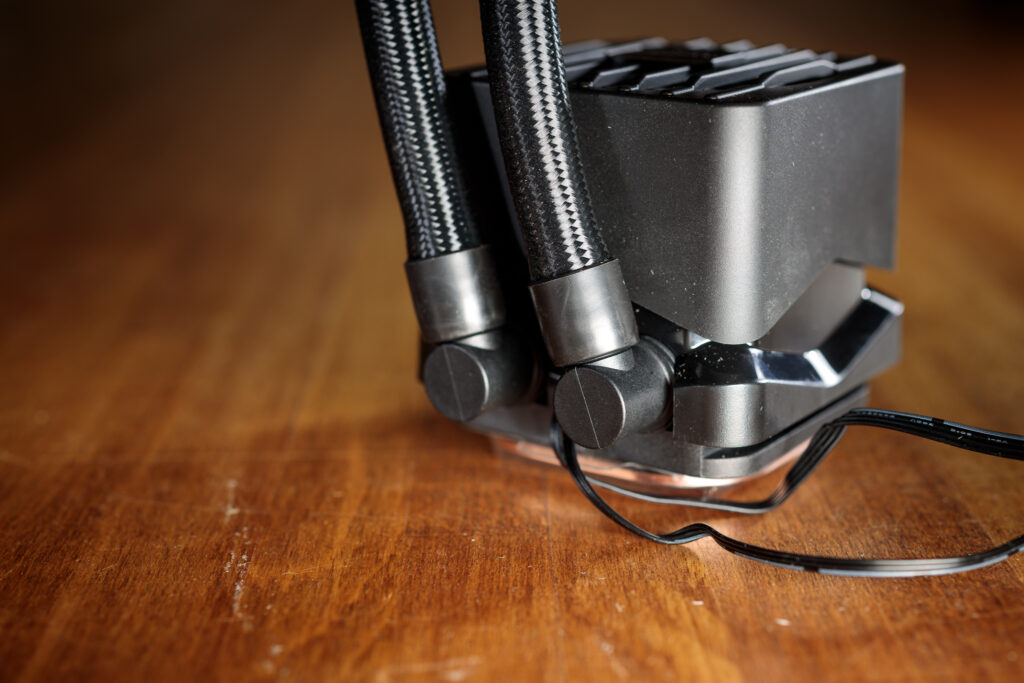
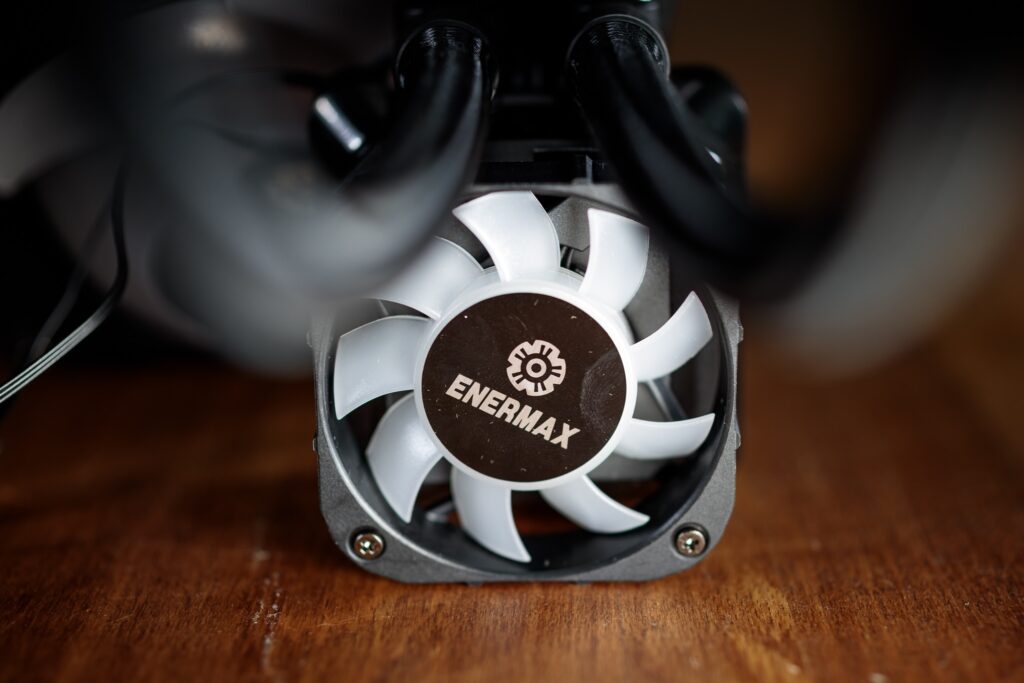
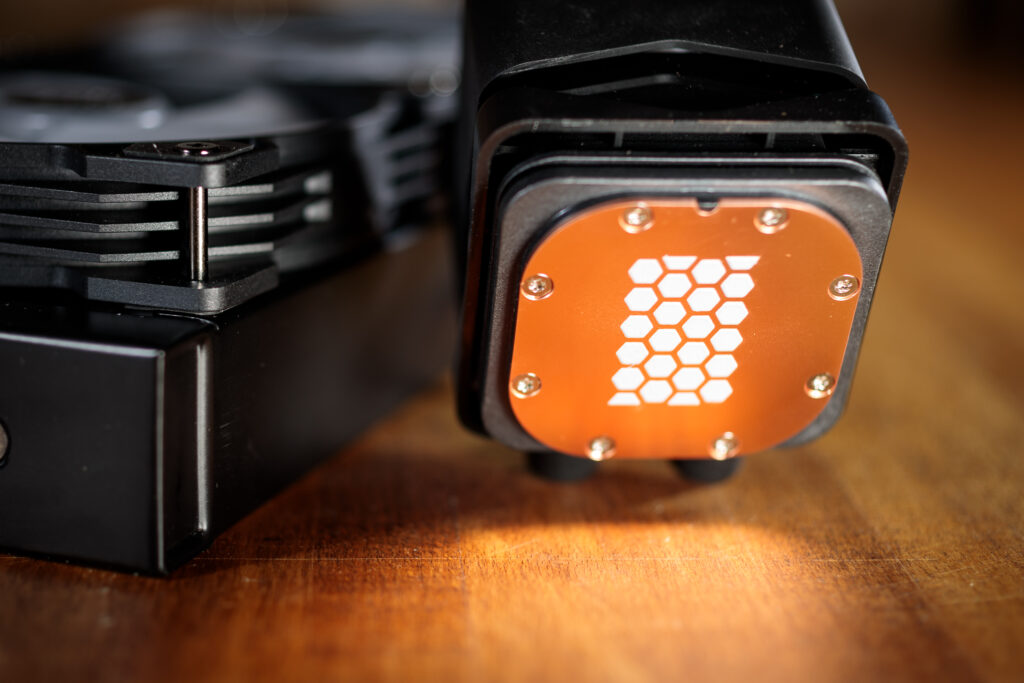
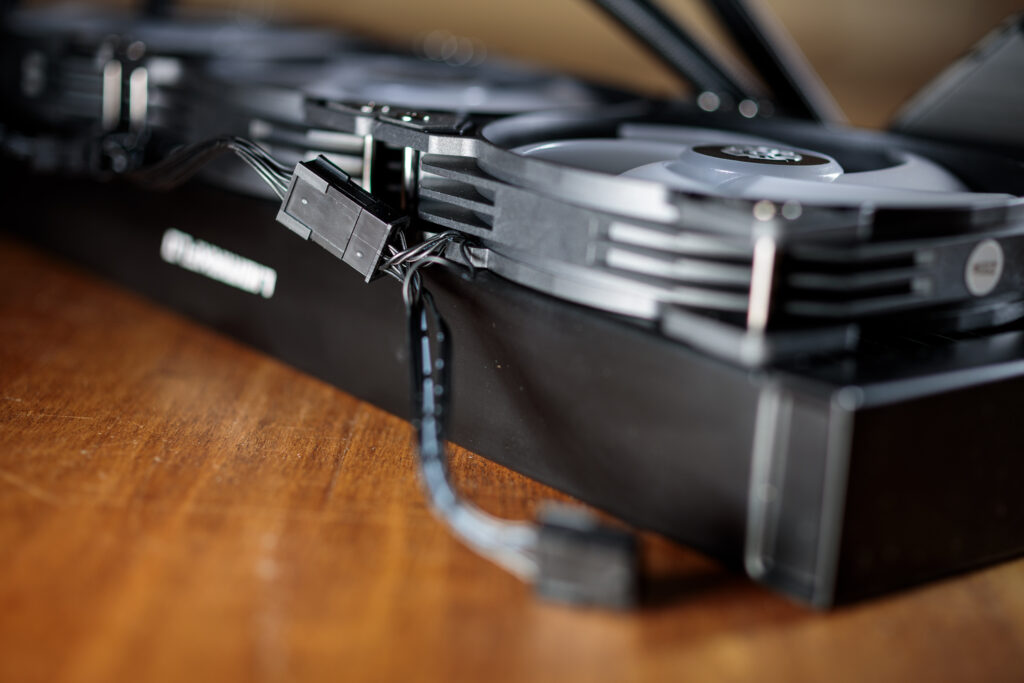

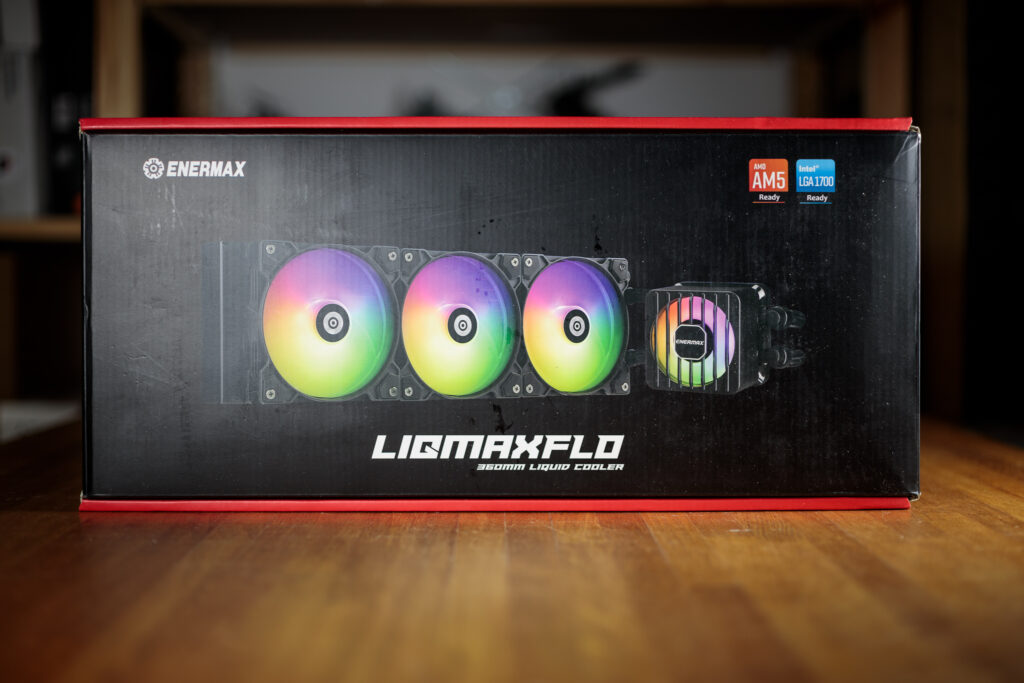
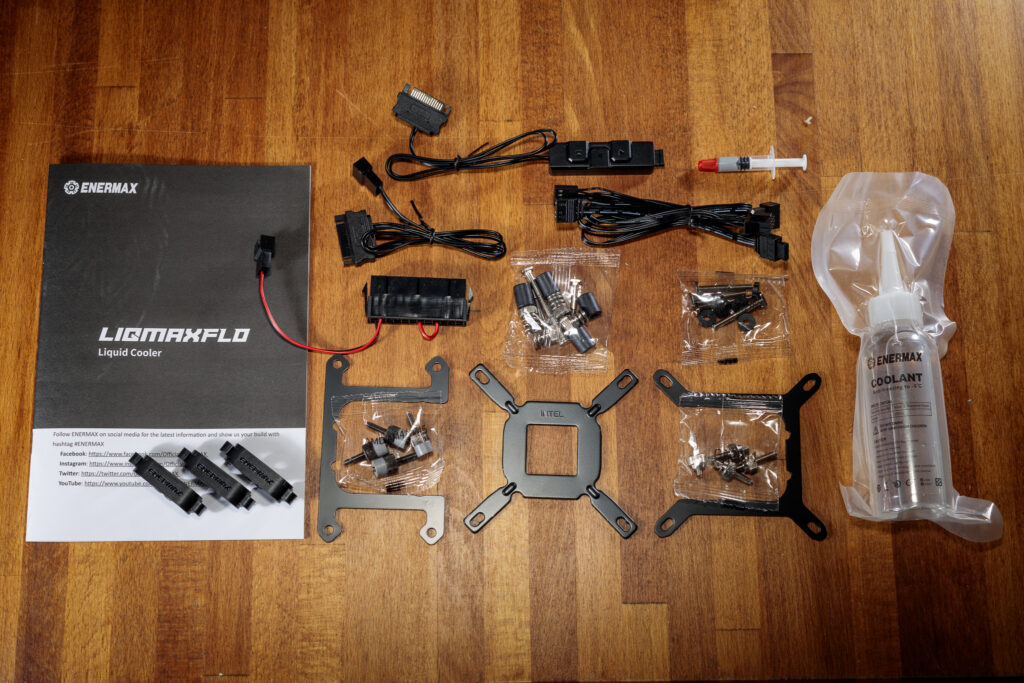






the title says silent but it doesn’t even appear on the 36dB(A) chart, that seems pretty contradictory
The tonal peaks are very strong, perhaps even stronger than the Arctic P12. I guess that’s to be expected with the softer translucent material and similarly long blades, without any ring to support them.
I would guess the peaks roughly corresponds to the blade pass frequency, so 39 dBA is around 65Hz/5*60 = 780 RPM for example.